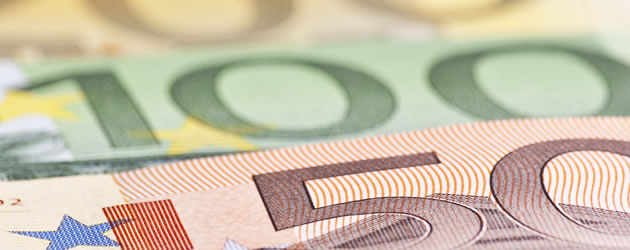Euro Slides as German Unemployment Falls but Eurozone Inflation Stagnates
After the shock of yesterday’s German Consumer Price Index figures, which showed an unexpected fall in inflation, today’s labour market data will come as a relief to investors. Unemployment Change in December performed better-than-expected, with joblessness dropping by -14k – the same rate as the previous month and almost double the anticipated drop. The number hasn’t been enough to change the overall percentage of people who are unemployed, which remains as forecast at 6.3%.
The Euro remained negative as traders awaited the Eurozone Consumer Price Index figures, which have repeated the performance of the German CPI by missing forecasts. Both the core and estimated Eurozone CPI have remained level, raising questions over the effectiveness of the European Central Bank’s (ECB) quantitative easing programme.
Yesterday…
German Consumer Price Index Figures Unexpectedly Drop
Today’s German CPI data has defied predictions of a rise, posting a -0.1% decline rather than a 0.2% rise. The EU harmonised index was expected to increase 01.% to 0.4%, but instead fell -0.1% to 0.2%. The figures have cast doubt over tomorrow’s Eurozone CPI data, which has also been forecast to rise.
The rising concerns over the Chinese economy, as well as low inflationary pressure and diplomatic tensions in the Middle East, have helped European bonds to rally. Yields on German 10-year bonds have fallen to 0.57%, Italian yields to 1.53% and Spanish yields to 1.71% as investors turn to safe haven assets, pushing up the price of bonds.
Earlier…
The Euro to Australian Dollar (EUR/AUD) exchange rate has made bullish advances following the news that the Chinese Manufacturing Sector has contracted again. Positive manufacturing PMIs for the Eurozone have further fuelled the rise of the common currency.
Euro to Australian Dollar (EUR/AUD) Exchange Rate Advances as Manufacturing PMIs Print Positively
The Euro is experiencing a strong start to 2016, advancing 0.6% against the US Dollar (USD), 1.3% against the Indian Rupee (INR), 1.7% against the Australian Dollar and 1.8% against the New Zealand Dollar (NZD) and the Canadian Dollar (CAD). Manufacturing PMIs for Italy, Germany and the Eurozone have all outperformed expectations, with Italy’s index performing the best with a 0.7 point rise to a 57-month high of 55.6. French manufacturing slowed by 0.2 against predictions, although this has been overshadowed by the performance of the other sectors.
European markets have been hit by concerns over China’s economic weakness, with the FTSE 100 index dropping -1.4% and the German DAX sliding 2.8%. However, with better-than-expected data, such as Greece’s manufacturing PMI showing sector growth for the first time in 16 months, the Euro has been able to make strong advances against the major currencies.
The EUR/AUD exchange rate is currently trading in the region of 1.5131.
Australian Dollar to Euro (AUD/EUR) Exchange Rate Forecast: Stock Market Closes Lower Amid Chinese Manufacturing Slump
The Australian Dollar has fallen across the board, posting losses of -0.4% against the Chinese Yuan Renminbi (CNY), -0.9% against the US Dollar, -1.4% against Pound Sterling (GBP) and -1.8% against the Euro. The drop has been caused by a decline in the Chinese manufacturing sector for the fifth successive month, with the Caixin China PMI for Manufacturing dropping down to 48.2 despite a small rise being forecast. Investors deserted Chinese stocks as the slowdown fuelled fears over China’s economy, causing trading on the domestic stock market to be suspended early following a severe drop in share prices.
The events in China have been felt in markets across the world, with Australia (which relies on China for the bulk of its mineral exports) one of the hardest hit. This, combined with a year-on-year (YoY) -23.3% decline in SDR terms of the RBA Commodity Index, has seen the ‘Aussie’ (AUD) plummet.
The AUD/EUR exchange rate is currently trending between 0.6591 and 0.6718.
Euro to Australian Dollar (EUR/AUD) Exchange Rate Forecast: German Consumer Price Index Figures Could Hammer ‘Aussie’ Lower
The Euro’s lead against the Australian Dollar could extend further if CPI figures from Germany meet the forecast rise. The German Consumer Price Index is anticipated to show a 0.2% rise to 0.6%, while the EU Harmonised index is expected to increase from 0.3% to 0.4% year-on-year (YoY). The only data for Australia today is weekly consumer confidence figures, which are unlikely to carry enough weight to dramatically slow the ‘Aussie’ slump.
The EUR/AUD exchange rate is currently trading between 1.4877 and 1.5170.



